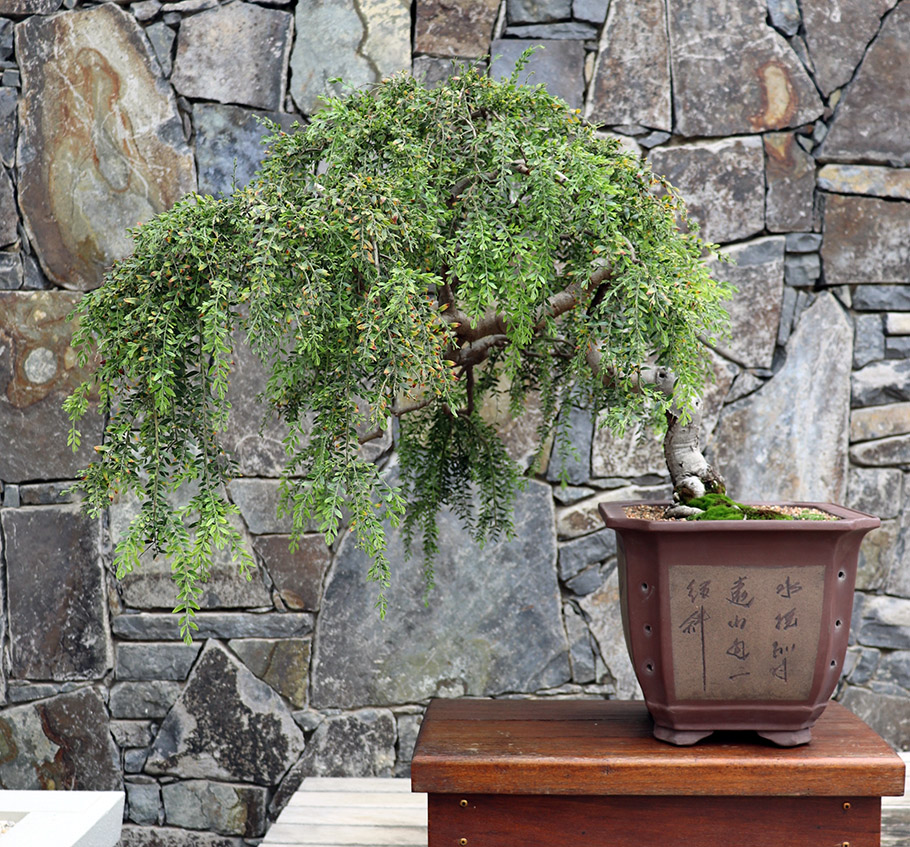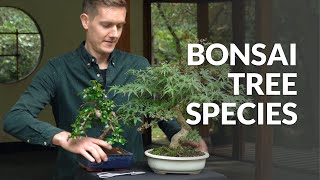Acacia Bonsai Care guidelines
The acacia needs a warm sunny and airy place over the growing season. In hot and dry climates wattle bonsai in small pots should be protected from hot afternoon sun in summer. In regions with cold winters the wattle needs a place inside the house or in a heated greenhouse, with temperatures between 12 and 20° C (53 – 68°F). If enough light and humidity is provided warm temperatures are fine, otherwise better keep the trees in a cooler place.
Always keep the rootball moist and never let it dry out completely, but at the same time take care not to overwater the tree, which would be as bad. Avoid watering with calcareous water. Continue reading about watering Bonsai trees.
Watering
Free lecture from the Beginners CourseApply solid organic fertilizer every four weeks or use a liquid fertilizer every two weeks during the growing season. Avoid fertilizers which are high in nitrogen, because they can cause long internodes. Nodule bacteria in the root system help the tree to absorb nitrogen very efficiently. In winter, if the tree is kept in a cooler place (around 12° C or 53° F) and does not show much growth, fertilize only once a month with liquid fertilizer.
Acacia bonsai can grow very fast and it is advisable to trim the trees regularly, in order to develop a nice ramification. In spring and summer, new shoots are shortened, leaving only one or two leaves. Heavy pruning should be done in winter, leaving stubs because of possible die-back. The stubs can be removed next time, when they are dry. Use cut paste in order to protect cut wounds. Wattles can be defoliated in late spring. Continue reading about pruning Bonsai trees.
Wiring can be done best after defoliation, when there are no leaves on the tree. Older branches are quite brittle, but younger twigs are flexible and can be shaped easily. Use aluminum wire and take care not to damage the bark. Guy wires can be a good option.
Repot the wattle Bonsai tree every two to three years and older specimens every three or four years in early spring. Don't prune the roots too heavily and take care not to remove the root nodules which are important for absorbing nitrogen. Use a well-draining soil mix with a sufficient humus content. Continue reading about repotting Bonsai trees.
The wattle tree can be propagated from seed or cuttings. The seeds have a hard coat and might not germinate without scarification.
Normally, vigorous wattle trees are hardly attacked by pests and diseases. Aphids and scale can bother acacias if they are weakened by improper position and care, then use a specific pesticide and improve the growing conditions for your tree. Root rot can occur when the tree is overwatered. For more detailed information on these techniques, check out our Bonsai tree care section.

Wattle bonsai (Acacia)
General information about the Wattle Bonsai tree
The small scented flowers have the shape of pompoms or panicles and their colour is usually between yellow and white, some cultivars can have pink flowers. They produce a lot of pollen and attract insects, especially bees. As Acacia belongs to the legume family, it has typical long hard and narrow seed pods. The bark is grey to light brown and gets deeply furrowed with age. Some wattle species have sharp thorns. Wattles grow in tropical and subtropical regions of Africa, Australia and Central America and are not frost-tolerant. During draughts some wattles shed their leaves. Acacia can become very attractive bonsai trees, but it is necessary to control their strong growth. If you need help identifying your tree, take a look at our Bonsai tree identification guide.





